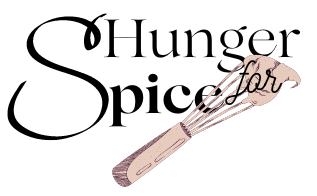Freezing fresh fruit at low temperatures prohibits the growth of micro-organisms. If done correctly, the results can be a great alternative to using in-season fruit, out-of-season. To keep food at optimal freezing temperatures, set the temperature at 0° F.

As an Amazon Associate, I earn from qualifying purchases. This post contains affiliate links and at no extra cost to you, I will be compensated if you make a purchase after clicking on the links.
When freezing fresh fruit, it is most effective to use the freshest ingredients possible and ripe fruit at its peak. Gently wash the fruit under cold water and dry before freezing. The texture of fruit will soften once frozen but the taste will remain mostly intact, if frozen properly.
When packing fruit in jars or plastic containers, be certain to leave about an inch head-space.
To Prevent Darkening
Many fruits require an ascorbic acid solution (vitamin C) to help prevent browning or decolorization. You can often find ascorbic acid solutions along with other preserving and canning products in local stores. Sometimes it is suitable to substitute lemon juice in place of ascorbic acid but keep in mind that the juices of lemon will alter the flavor of the fruit.
Pureeing fruit
Pureeing fruits for jams, sauces, smoothies, and pies is also a great way to preserve fruits. Place the fruit in the blender and puree. Transfer to a glass jar or plastic container with a tight-fitting lid, label and place in the freezer. Not all fruits are suitable for this method, see downloadable chart.
Dry Pack Without Sugar
Spread the fruit out on a baking tray and place in the freezer. Remove the fruit from the freezer after it has frozen. Place the fruit in containters or vacuum seal and arrange in trays to save on space.
Wet Pack Without Sugar
After washing and drying the fresh fruit, there are two options. One is to leave the fruit whole or slightly chopped and add water, the other option is to crush the fruit and preserve in its own juices.

Freezing Fresh Fruit Sugar Free Syrup Pack
Make a simple syrup out of your favorite sweetener, we like using erythritol for this. In a saucepan, over medium-high heat, bring the water and sweetener to a boil, reduce to simmer and cook for about 10 minutes. Allow the syrup to completely cool before pouring over the fruit.
Light syrup: 2 cups water to 1 cup sweetener-= 2 ½ cups syrup
Medium syrup: 2 cups water to 1 ½ cup sweetener = 2 ¾ cups syrup
Heavy syrup: 2 cups water to 2 cups sweetener = 3 cups syrup
Label Your Freezing Fresh Fruit Containers
Label each container with the fruit contents. Make a note of whether the fruit is packed in syrup. You always want to account for the sweetness already in the fruit when preparing a recipe.
Thawing
To help prevent bruising and browning, leave the fruit in the container it was frozen in while thawing. Turn the container periodically to coat the fruit in its own juices to help provide the best flavor.
Downloadable Freezing Fresh Fruit Chart
Do you want a guidline for which fruits require ascorbic acid, which fruits should be packed in what level of syrup, and what methods are recommended for each fruit? Grab our downloadable PDF Freezing Fresh Fruit Chart.
Looking for more great tips? Check out our vegetable nutrition and season guide, and basic egg preparation tips.


Disclaimer
We have offered this information in good faith and believe the information to be true and accurate. Some foods are not suitable for everyone. The information provided is not medical advice. You should not rely on any information on this site as an alternative to medical advice from your doctor or other professional healthcare provider. You should always consult your doctor or other professional healthcare provider before adopting any dietary changes.



Leave a Reply